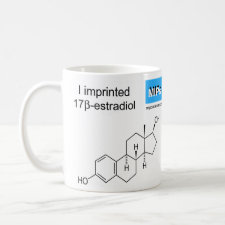
Authors: Wei ST, Mizaikoff B
Article Title: Binding site characteristics of 17β-estradiol imprinted polymers.
Publication date: 2007
Journal: Biosensors and Bioelectronics
Volume: 23
Issue: (2)
Page numbers: 201-209.
DOI: 10.1016/j.bios.2007.03.031
Alternative URL: http://www.sciencedirect.com/science/article/B6TFC-4NH7DYP-1/2/d814ac6c05924f80738353db31ca6821
Abstract: The variety of applications utilizing molecularly imprinted polymers (MIPs) requires synthetic strategies yielding different MIP formats including films, irregular particles, or spheres, along with precise knowledge on the specific material characteristics, such as binding capacity and binding efficiency of these materials. In response to this demand, MIPs are prepared in different formats by variation of the polymerization methodology. It is commonly agreed that micro- and sub-microspheres are particularly advantageous MIP formats, due to their monodispersity and facile synthesis procedures in contrast to conventional imprinted polymers prepared by bulk polymerization. However, the differences in actual rebinding characteristics of different MIP formats based on molecular interactions under a variety of binding/rebinding conditions have not been studied in detail to date. Consequently, the present work details an analytical strategy generically applicable to MIP systems for rebinding studies including equilibrium binding, non-equilibrium binding, and release experiments enabling more profound understanding on the molecular interactions between the imprinted materials and the template molecules. In this study, three MIP formats were considered for the same template molecule, 17β-estradiol: irregularly shaped particulate polymers prepared by bulk polymerization and grinding, microspheres, and sub-microspheres. The latter two formats were synthesized via precipitation polymerization using different processing strategies. The morphologies and porosities of the resulting imprinted materials were characterized by scanning electron microscopy (SEM) and Brunauer-Emmett-Teller (BET) analysis, respectively. The obtained results indicate that microspheres prepared by precipitation polymerization provide superior rebinding properties during equilibrium binding in contrast to bulk polymers and sub-microspheres, and that the rebinding properties are different during equilibrium binding versus non-equilibrium binding. The median binding affinity constant determined during non-equilibrium rebinding is higher than the values obtained from equilibrium rebinding. Furthermore, the binding site distribution appears more homogeneous thief derived from non-equilibrium rebinding, as reflected in a heterogeneity index of m = 0.725. Moreover, it is hypothesized that the specific interactions between template and monomers are related to the porosity of the imprinted polymers, which implies that the amount of binding sites and the pore sized distribution of the imprinted materials are a critical factor in achieving the desired MIP performance in various analytical applications. The BET results indicate that particles prepared with lower cross-linker-to-template ratio have a reduced surface area. Furthermore, it can be expected that there are less specific binding sites available at particles with reduced surface area and pore volume given similar distribution of the binding sites, as confirmed by the equilibrium binding isotherm studies. The pore size distribution results reveal that control of the pore size in the range of 100-180 A is essential to obtain the desired retention properties and Gaussian peak shape during HPLC analysis of small molecules
Template and target information: 17β-estradiol
Author keywords: molecular imprinting, Imprinted microspheres, Imprinted sub-microspheres, Freundlich adsorption isotherm, porosity, 17β-estradiol



Join the Society for Molecular Imprinting

New items RSS feed
Sign-up for e-mail updates:
Choose between receiving an occasional newsletter or more frequent e-mail alerts.
Click here to go to the sign-up page.
Is your name elemental or peptidic? Enter your name and find out by clicking either of the buttons below!
Other products you may like:
 MIPdatabase
MIPdatabase









